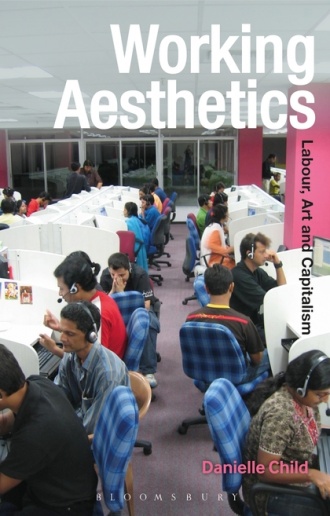This is the last article you can read this month
You can read more article this month
You can read more articles this month
Sorry your limit is up for this month
Reset on:
Please help support the Morning Star by subscribing here
Working Aesthetics: Labour, Art and Capitalism
by Danielle Child
(Bloomsbury, £21.99)
UNUSUALLY for a young art historian, Danielle Child bases her discussion of the relationship between contemporary art, labour and capitalism on the “Marxian” ideology that art, as part of the superstructure, is defined by its economic base.

Focusing mostly on US and British art, where neoliberalism has been strongest, she argues that its managerialist, fragmented, individualised and precarious working models are mirrored by new artistic practices since the 1990s.
Tracing these to the era’s “prehistory” in the late 1960s and 1970s, she explains how monumental public art projects such as those of Claes Oldenburg were fabricated by new, specialist firms.
These employed skilled craftspersons to make the works, thereby deskilling the artists. But by contracting and overseeing the production of their work by anonymous, waged workers, artists reskilled themselves as white-collar managers.
And these changes stemmed from the conditioning of US consciousness by the deskilled production processes instigated by Fordism and Taylorism.
Child expertly explains how the Young British Artists’ (YBAs’) new conception of art and artists in the late 1980s and 1990s were responses to the neoliberalism initiated by Thatcher but continued by John Major and Tony Blair.
Thus some YBAs, notably Damien Hirst and Tracey Emin, enthusiastically responded to governmental encouragement of entrepreneurism. Many YBA works were fabricated by anonymous skilled and waged workers employed by the newly founded Mike Smith Studio.
Art-school educated, Smith used his knowledge of the art world to extend his art fabrication business to project management and networking with galleries and collectors and his methods exemplified neoliberal management theories.
They appropriated the 1968 artists’ critiques of capitalism as tyrannical and alienating into a new economic model which co-opted traditional concepts of artists and scientists as visionaries, inspirers and innovators, to redefine and deify the “new manager” as one who “thinks like an artist.”
Child explores the various ways in which socially engaged artists still resisted capitalism, despite its appropriation of the artist’s role as social critic. Thomas Hirschhorn’s public Monuments of 2002 and 2013 were complex, multiple and temporary events.
Intended to introduce the experience of art and philosophy to the working-class communities in which they were set, he asked for their active, paid collaboration.
By overseeing the events, Hirschhorn appeared to conflate his role as his own project manager with that of autonomous artist. But Child argues that these roles cannot be truly assimilated, since Hirschhorn’s non-profit making project opposed “real” project managers’ capitalist drive for profit.
She contends that the various actions by the Liberate Tate collective in both its London galleries from 2010 onwards were responding to the competitive, corporate arts sponsorship originally encouraged by Thatcher by tax breaks and by cutting state arts funding.
Calling for an end to the Tate’s BP sponsorship, their imaginative and unauthorised performances exposed the ecological and social destructiveness of the oil giant. Such “art-washing” to polish their public image is most enthusiastically practised by similar “dirty” businesses such as tobacco, petroleum and arms manufacturers.
Her other case studies include the German collective Rimini Protokoll’s responses to the dematerialised, precarious and contracted call-centre work, with performances which subvert the short, impersonal, scripted exchanges between Europeans and Indian call-centre workers, by engaging them in lengthy and paid personalised conversations.
This is not an easy read. Child draws on a dizzying range of recent cultural, sociological and philosophical theorists who use specialist jargon and with whom she engages in somewhat obscure academic debates.
But perseverance rewards the reader with stimulating and meticulously argued contextualisations of art with political change and with important updates to our knowledge of visual art from a Marxist stance.










